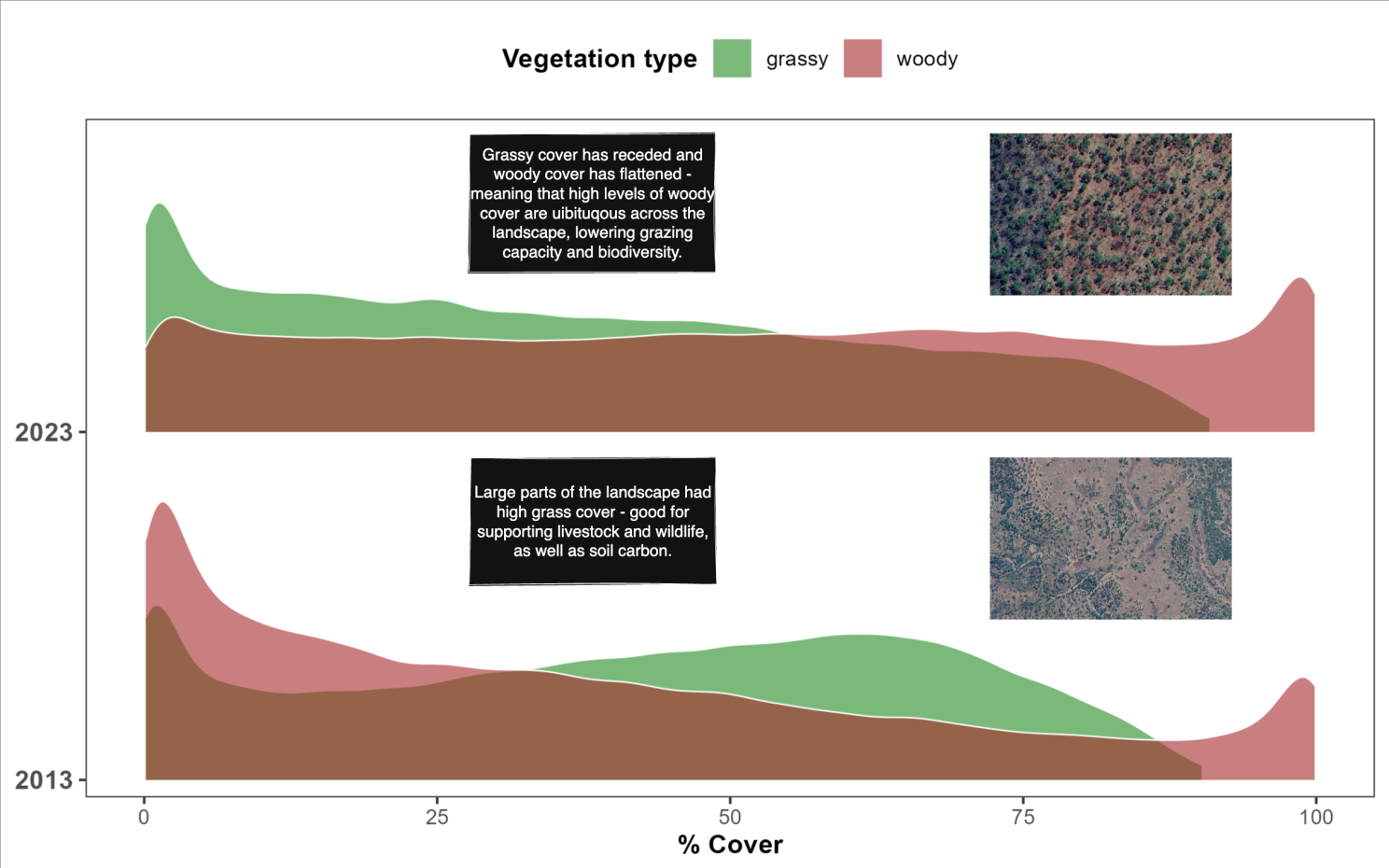KAZA Rangeland Assessment
Photo by:
Overview
KAZA Rangeland Assessment
Angola, Botswana, Namibia, Zambia, Zimbabwe
520,000 square kilometers
Description
Kavango‑Zambezi Transfrontier Conservation Area (KAZA) is one of the world’s largest transboundary conservation areas, spanning Angola, Botswana, Namibia, Zambia and Zimbabwe. Its forests, grasslands, wetlands and savannas support rich wildlife and human communities, but land degradation driven by human activities and environmental pressures now threatens the region’s ecological integrity.
Download the project files here
Rewild Capital, with REHerd Africa, assessed rangeland condition across the 516,000 km2 KAZA region using 90m-grid vegetation fractional cover. Between 2013 and 2023 median woody cover rose from 30% to 52%—a widespread trend known as bush encroachment, driven largely by three reinforcing factors:
- Overgrazing — reduces the grassy layer’s ability to suppress woody seedlings
- Fire suppression — cessation of regular, controlled burns lets shrubs and trees establish and eventually prevents natural fires
- Higher CO2 levels — elevated atmospheric CO2 favours woody plants over grasses

Nearly one million people depend on KAZA’s grasslands; median grassy cover has fallen from 44% to 33%, reducing forage, biodiversity and livelihoods. This is a major challenge — and an opportunity: thinning woody biomass into biochar and restoring grasslands with adaptive grazing and controlled burns can boost grazing capacity, biodiversity and resilience while sequestering soil carbon.
Key metrics
Carbon removed (tCO2e)
Employees supported
Area conserved (ha)


